
Cranleigh Station Platforms – c.1965 © Norman Hamshere
My dad’s name was Harry Koster and in London he used to work as a mechanic for the black taxi cabs. He was in Burma during the war and when he came out of the army there was a shortage of jobs and a shortage of homes. He really wanted to get out into the country and didn’t want to stay in London. A job came up advertising for a woman to run the level crossing gates which included accommodation in a house in Knowle Lane, Cranleigh. My Dad rode his motorbike hotfoot from London to Cranleigh taking my mum for an interview. My sister and I found it really strange because they never went anywhere without us and they had to get someone to look after us.
Later, I remember my mother telling me that she wasn’t the first choice for the job of level crossing gate keeper, there had been someone before her. But mum had more instant reactions to the red and green lights so she was offered the job. That’s how we came to live in Cranleigh in the level crossing house in Knowle Lane in 1960.
I was born in Peckham, London where we lived in an upstairs flat, in Geldart Road. In fact we had to walk down the stairs, along a corridor and out to the garden for our outside toilet. I went to Peckham Park Junior School. It was a massive school, far bigger than the local schools here. I was 8 when we came to Cranleigh in 1960.
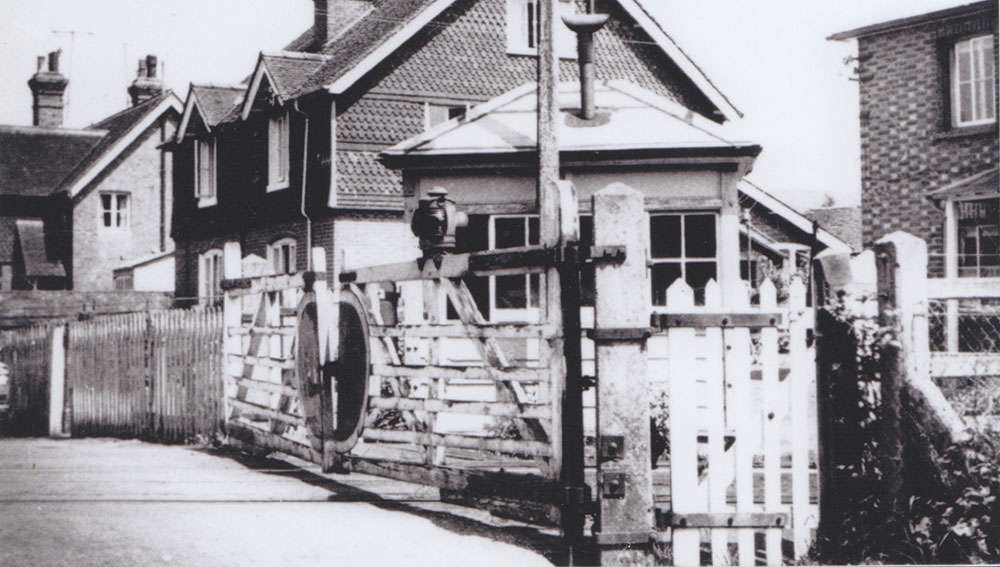
The level crossing in Knowle Lane © Norman Hamshere
My first school here was the building that is now Cranleigh Arts Centre. I must admit when I first went into the school, I remember reaching up to the latch on a door and catching my thumb underneath it and pinching my thumb which made my whole thumbnail go black! The building was all sectioned off for different classes. They would heat the milk we had around the boiler, it was a very old-fashioned school. I was there until I went to Glebelands school at the age of 11.
Because I had moved down here from London they put me into the year below my school age until they could assess my ability. That really didn’t appeal to me nor did the ‘sit up and beg’ desks which we had then because I had come from a very modern environment at my London school. It was very strange to me that we also went into the church and spent a lot of time there for our lessons, going backwards and forwards. However, gradually the church became very much part my life. I was in the choir for ten years.
I can recall one teacher – Miss Gloyne – who seemed at first to be very strict but she was fair and anxious that we should all make the most of her lessons. She used to have pupils visit her at her home at weekends to play educational and memory games. We entered a singing competition at Guildford one year and she gave up her time to coach us and take us to compete – I still remember her instruction to breathe while singing! I recall that some years after I had left she lost her life in an accident while riding her moped.
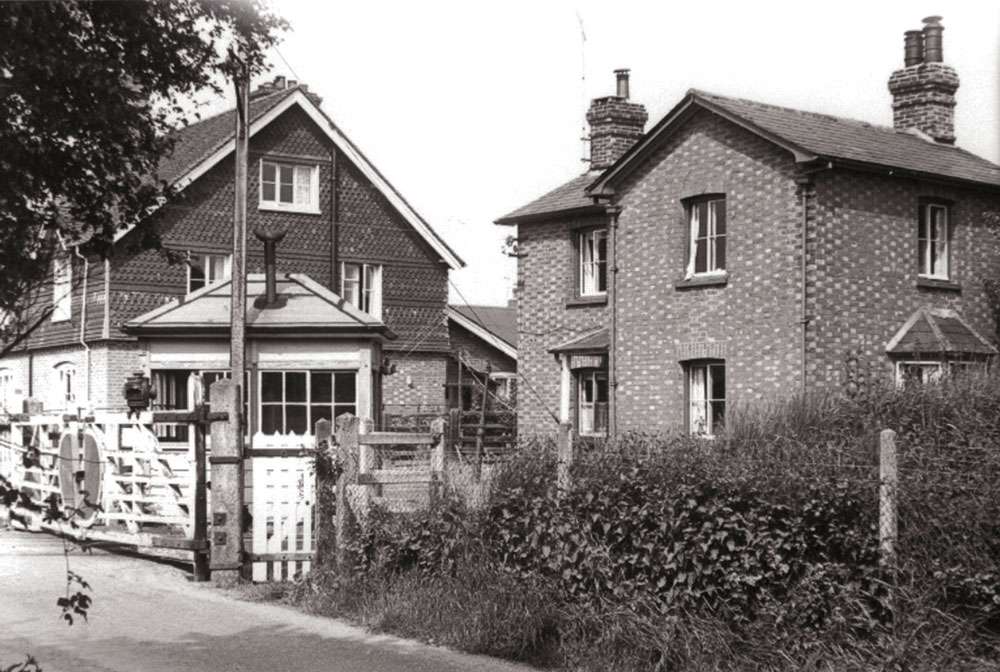
Our family home, in Knowle Lane, Cranleigh Crossing Gate House – c.1960 © Norman Hamshere
There was another lady, Miss Maltravers who was extremely tiny, about 4’10” and wore her hair on top fastened with tortoiseshell combs. While teaching she would let her hair down, it was so long it literally reached the ground. She would then put it back up again, while talking to us, grips in her mouth with great aplomb and timed perfectly to whatever she was saying. My whole life had changed so quickly in a very short space of time from schools to houses and making new friends.
Our house at the level crossing was really nice but sadly it’s become rather dilapidated now. Half of Marks and Spencer’s car park was our garden. My father was a keen gardener and made the most of the garden there. In those days all the stations along the line, Baynards etc would grow Dahlias. Our garden was absolutely full of the dahlias dad grew throughout the summer and autumn, so much so that when I got married I had to have dahlias in the church and the hall, everywhere!
My dad obviously had to find a job and he became a signalman at the station. In those days the station was very much a part of the community in Cranleigh. There used to be two Signalmen, a Station Master, whose house was in Stockland square, a Porter and a Ticket Clark. The railway was very busy night and morning, so much so you can imagine people hanging out of the train windows, just like in the cartoons, that’s how I remember it when I was younger. I would watch the trains first thing in the morning and in the afternoon at rush hour times when the trains were always full.
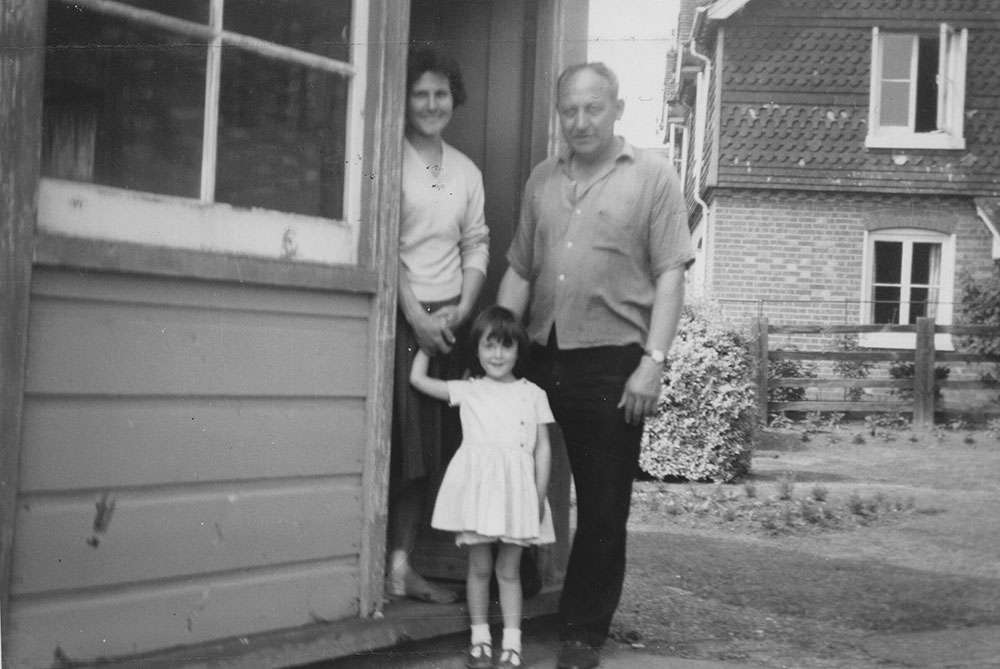
My Mum and Dad in our garden with one of my cousins
The station itself was literally where the Oxfam book shop is now and along to the bank was where people used to buy their papers at the WH Smith booth before they got onto the train. It was just a gravelled area then.
I was very lucky that I could travel on the trains for free as part of my parents’ job and it seems strange now because I was really quite young when I used to go to Guildford or to Horsham. I would travel on my own because my mother was not allowed to leave her post. My dad was operating the signals and my mum was doing the gate. Dad would signal to mum to open the gate, then later he would signal to her for his tea! A job that fell to me as a child, which I hated (my sister would never do it) was to take a cooked meal to my dad, sandwiched between two plates in a basket with stuff for his tea. I would walk along the sleepers. I can remember how hard it was when I was young to balance the meal in these 2 plates, while walking along the sleepers and thinking how dangerous it was. I would just hope no train was coming.
My Mum had to be at the gate whenever a train was going to come through. The trains didn’t run at night, I can’t remember exactly what time they finished but I think it probably was about 9pm. If mum wanted to go to the village, she’d wait until she had an hour or so and go to the shops quickly. In fact I remember clearly one day she went to the village and didn’t get back in time. I heard these bells going so I started to open the gates just as my mum came running in. She was really quite cross with me.
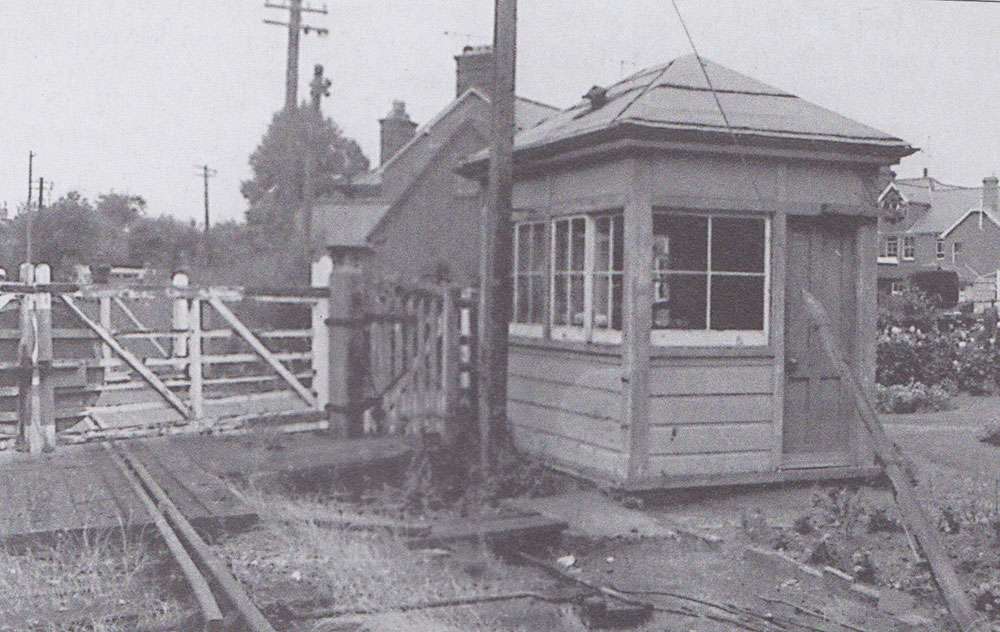
The hut from which my Mum operated the level crossing gates
Everything was bell-linked. It must have been on a wire because there was a box, nothing elaborate. But I loved the box because I wanted to use it as a playhouse, the bell was linked indoors, and if it was raining she could stand in the box. It was an ideal job for a woman because it was right next door to the house.
It was also quite noisy at the house when the trains went by. We had two trees in the garden and my dad fixed up a swing. I can remember I used to get on the swing and swing as high as I could so when the trains went by I could wave to the train drivers and customers and people would wave back out of the windows.
On the other side of the railway line my father always used to garden and grew his vegetables there. All that was on the other side of the line, where the field is now. When the railway closed in 1965 my parents were offered the house to buy for £1,800, which they eventually did, though not straightaway. It was really nice as we had lovely neighbours, who actually offered to lend my dad the money because they liked us being there.
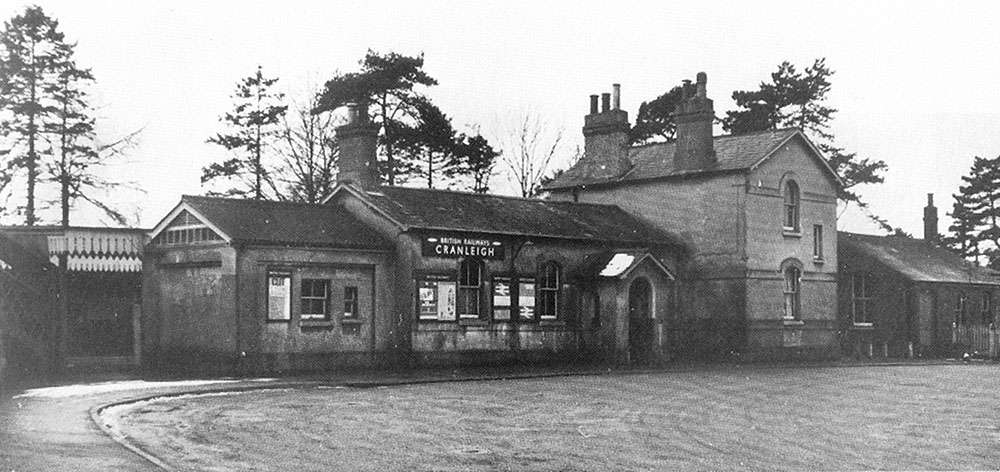
Cranleigh Station Buildings – c.1960 © Gerry Bixley
When the railway closed my mother lost her job straightaway. It was quite devastating for them. My dad got another job in Slinfold. The station and railway were such a big part of the community, the station was the hub. You can imagine Stockland Square in the middle of the village as it is now and the station was the centre. They started to run buses back and forth but it wasn’t successful. Well I don’t think so because they didn’t run the route for long and people were obviously not very happy about that.
The village was quite small up until that point but looking back it was really strange because there were so many houses about to be developed in the village. There wasn’t must forethought about closing the station just as the village was about to expand. The railway could have run very successfully if they just cut down the staff, changed their timings and automated some of the workload.
They built a new supermarket called Key Market in place of the station in 1965 or very soon after. My mum eventually worked there. It later became Somerfields Supermarket.
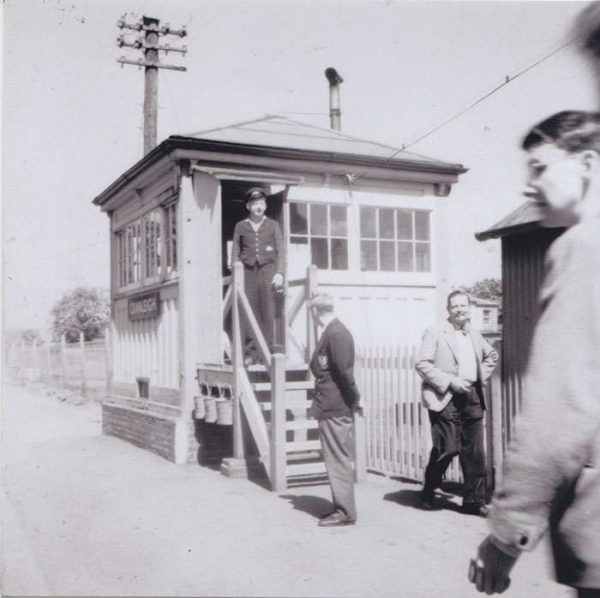
Harry Koster at the top of Signalman’s steps early 1960 courtesy of Pat Disley
It was a very sad day when the station closed. Many people came along to sort of say goodbye. I can remember standing on the gate and seeing lots of souvenir hunters taking things like the Cranleigh signs and all the little bits, no one really stopped them. I often think it would have been nice to have kept something myself, but we didn’t think about it at the time. Baynards station just along the line is still intact even now. It was Jeff Burgess who used to live on the station. Whether he stopped them taking things at that station or not I am unsure. But almost all the memorabilia went from Cranleigh station. At that time I would have been 13, still at school.
When I left school I went to work at Starbucks, a printers down Knowle lane. It actually backed onto my house and couldn’t have been more convenient. I walked out of my gate and along two or three houses. Trying to imagine what is there now? I suppose it would be part of Marks and Spencers as well. It was a very successful firm at the time, lots of people worked for Starbucks.
Later on I worked in Cranleigh cinema as a part-time job when I was saving to get married. In those days lots of people would go to the cinema, it was very popular. The cinema opened on 30th October 1936 and closed 14th March 2002. The clock, projector and curtains were sent to the Bletchley Park WW2 code-breaking museum I think, because they dated back to the war and are now used as part of Bletchley Park movie tours. It’s fascinating when you think back.
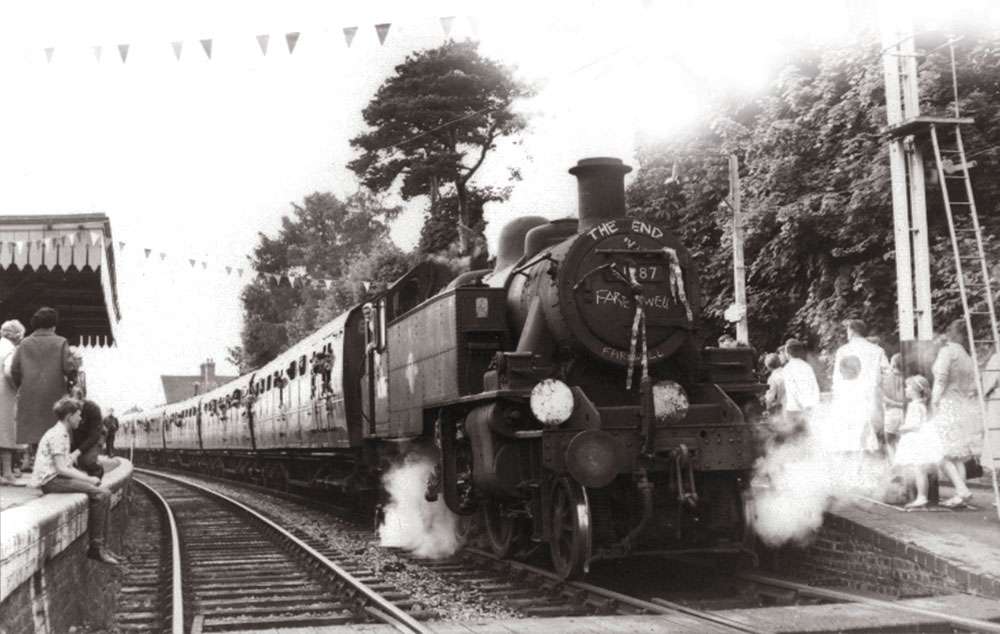
The last scheduled train to Horsham 1965 © Norman Hamshere
I started going out with Alan Disley from Ewhurst when I was 18 and we married when were both 20, in St Nicolas Church. We have been married for 46 years this year. Alan is a builder and did his apprenticeship in Cranleigh working for Hewitts, a local firm. He has been in business on his own since he was 23 until he recently retired.
Once we were married we had to move to Godalming because the same thing that applies here now was true then – you could not buy a first-time buyers’ house in Cranleigh. We could not afford to live in Cranleigh. So when I hear people jumping and down now about the price of houses in Cranleigh I know all too well what they mean as a lot of us discovered that too when we were starting out in life.
Our first house purchase was in Godalming and cost approximately £6,500 in 1972. It was completely dilapidated and we renovated it doing most of the work ourselves. Subsequently we sold that house and moved back to Cranleigh to live.
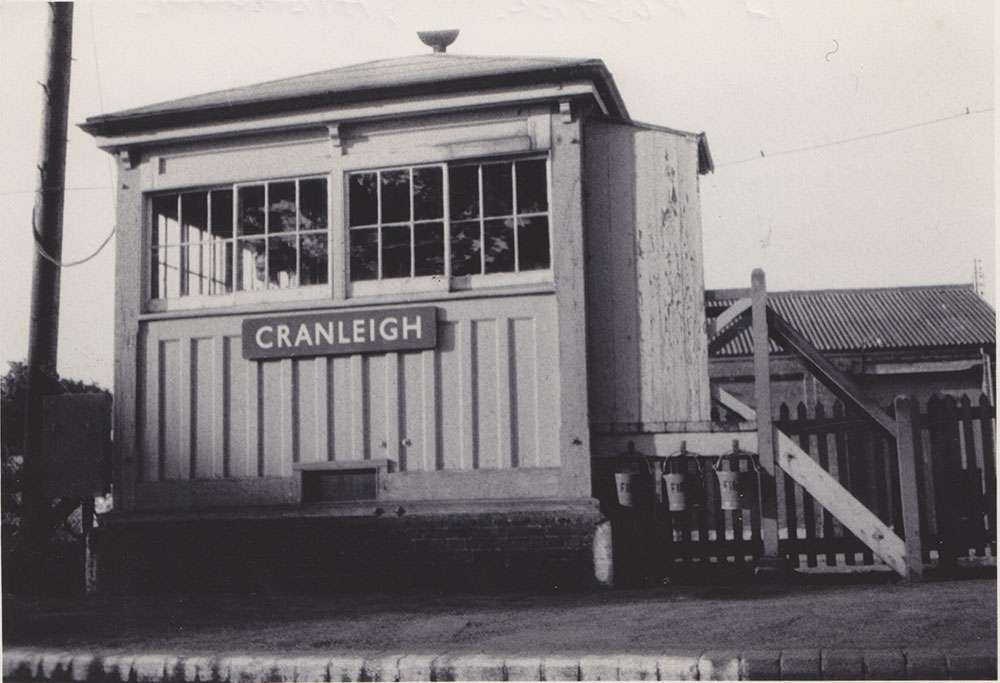
Cranleigh Signal Box – May 1965 © J.T. Howard Turner
I’ve lived most of my life in and around Cranleigh and its changed so much over the years. It’s become so much bigger. When I was a child and even a teenager I could always go to the village and see literally everybody I knew. Nowadays friends laugh at me, they say ‘Pat whenever we go out with you, you always know someone.’ It’s inevitable really because if you’ve been at school in this area then you will know many people, which is a lovely thing. But I do regret what they are doing to the village, the building of lots of houses and flats.The old gate house that we lived in is a mess now. It was a beautiful house built of an old red engineering brick, an ‘oldie worldly house’ and it was in keeping with the village.
Despite all the changes in the village though I don’t think we would move away. We did consider it but all Alan’s family are here. We have so many friends and family and it makes no sense to move away.
I can only say that I feel really thankful we came to Cranleigh and I had such a good and caring start to my life here. Such happy and lasting memories.
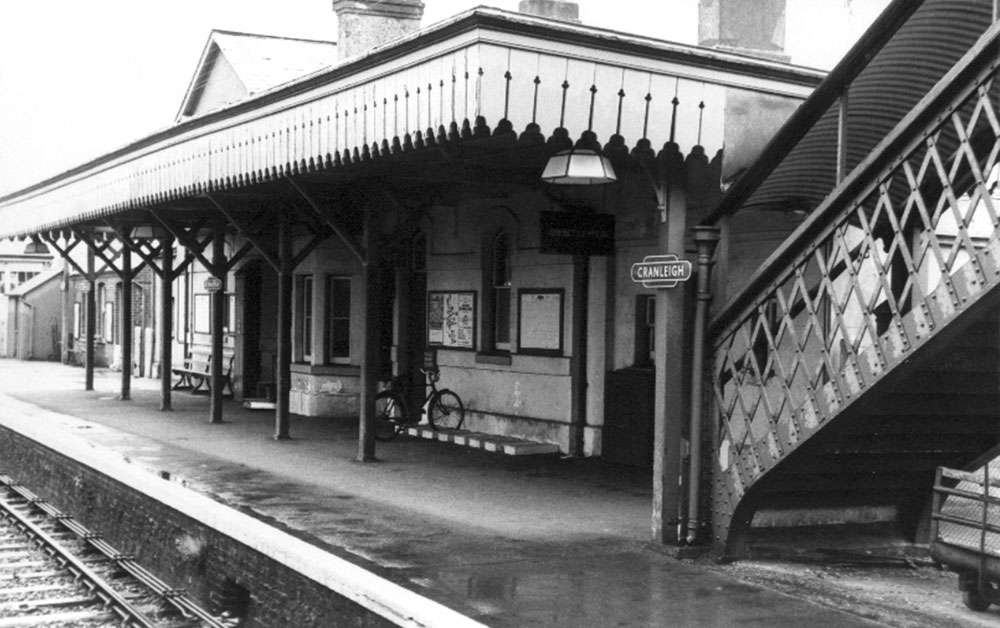
Cranleigh Station Platform 1 – c.1960 © Norman Hamshere
Having realised some years ago that “life is not a rehearsal” I decided to share my love of theatre, travel and the arts with other like-minded people. On the demise of Theatregoers (a company where I did my training) 16 years ago I decided to set up my own company *TheatrePlus. Since then the group has gone from strength to strength and other than some snatched personal holiday time, I have arranged at least once a week, many and various events, including some wonderful theatre performances, and different and adventurous holidays.
Whilst a busy occupation at all times, I consider myself to have a wonderful and satisfying job, and ably helped by the “longest serving’ apprentice in the world, my hubby Alan, my life is dedicated to finding different and fun events for my loyal band of members in the hope of furthering their “art of enjoyment” . . .
*www.theatreplus.co.uk Make this a year to remember and call Pat Disley on 01483 268464 and she will be happy to explain more about her activities.
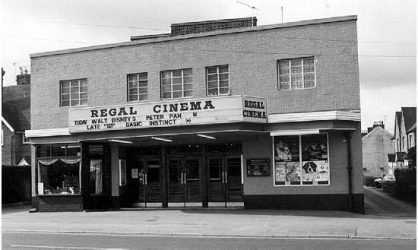
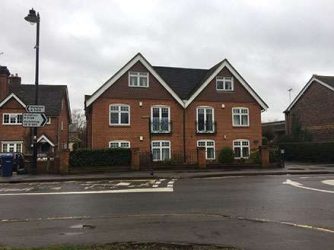
(Left) The Cranleigh cinema before it was demolished in 2002 © Copyright Bernard Tonks 1992
(Right) The site of the old cinema, now a block of flats
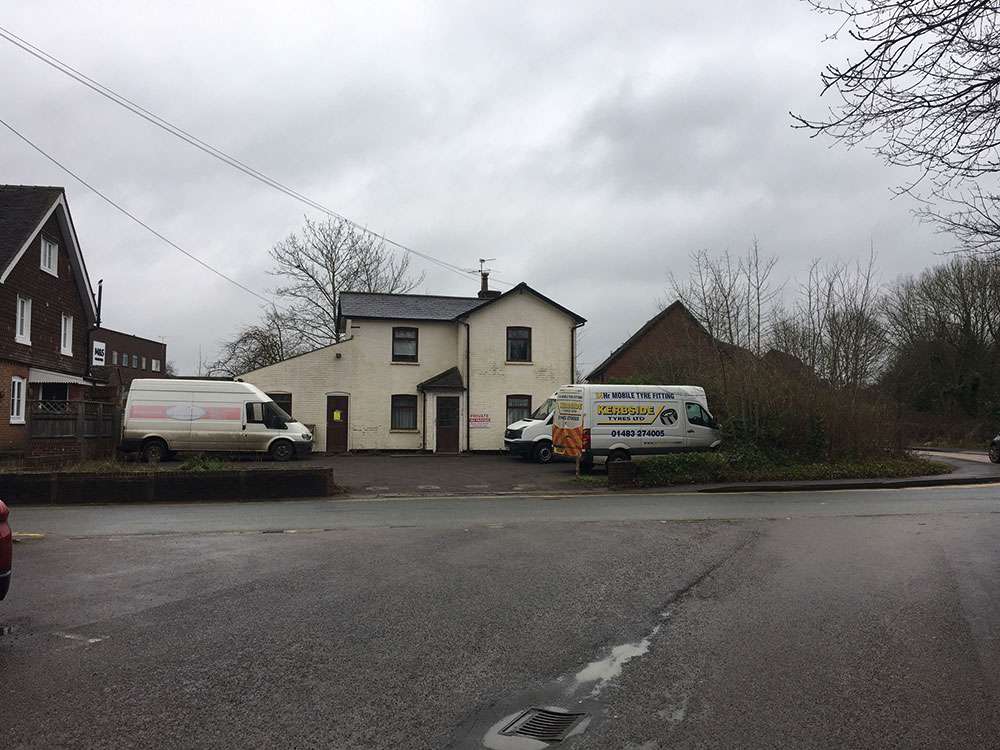
The gate house, now used by Age Concern UK as an office











